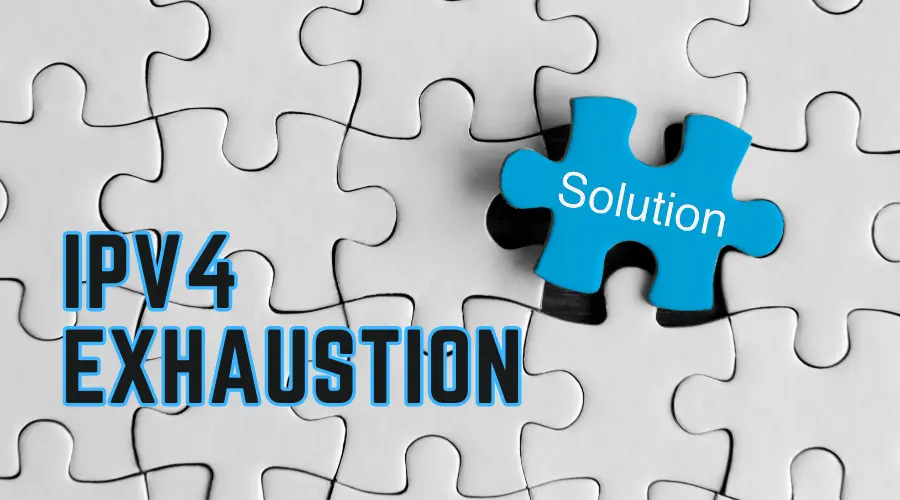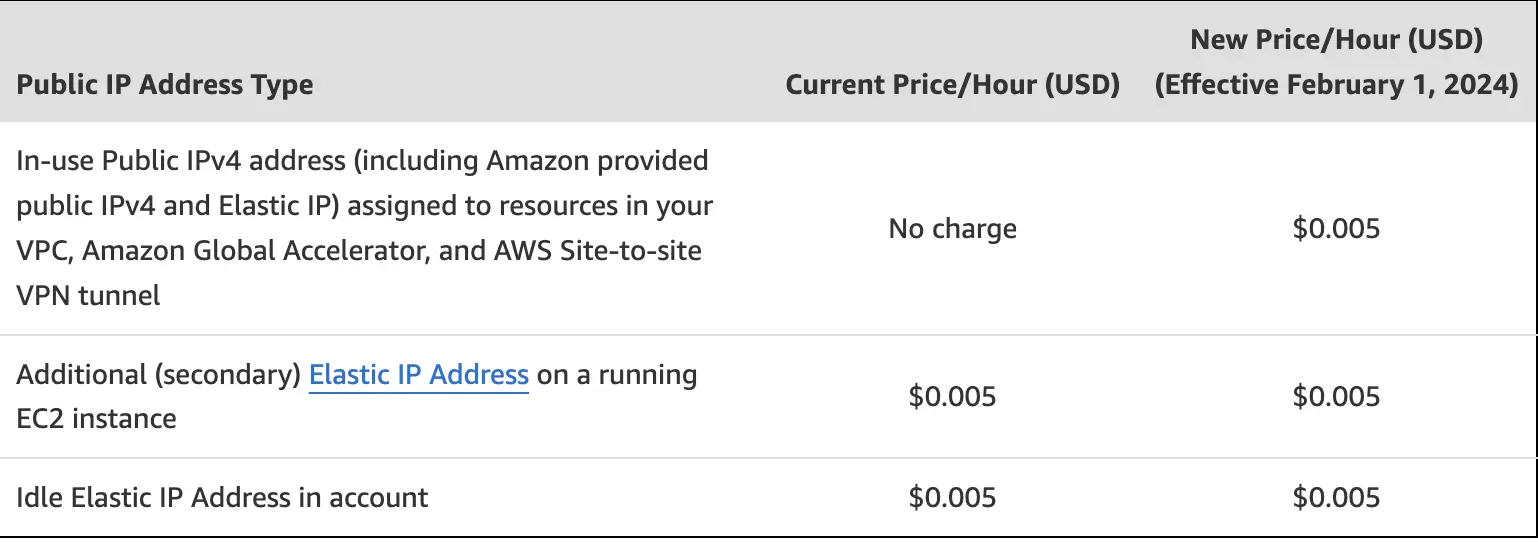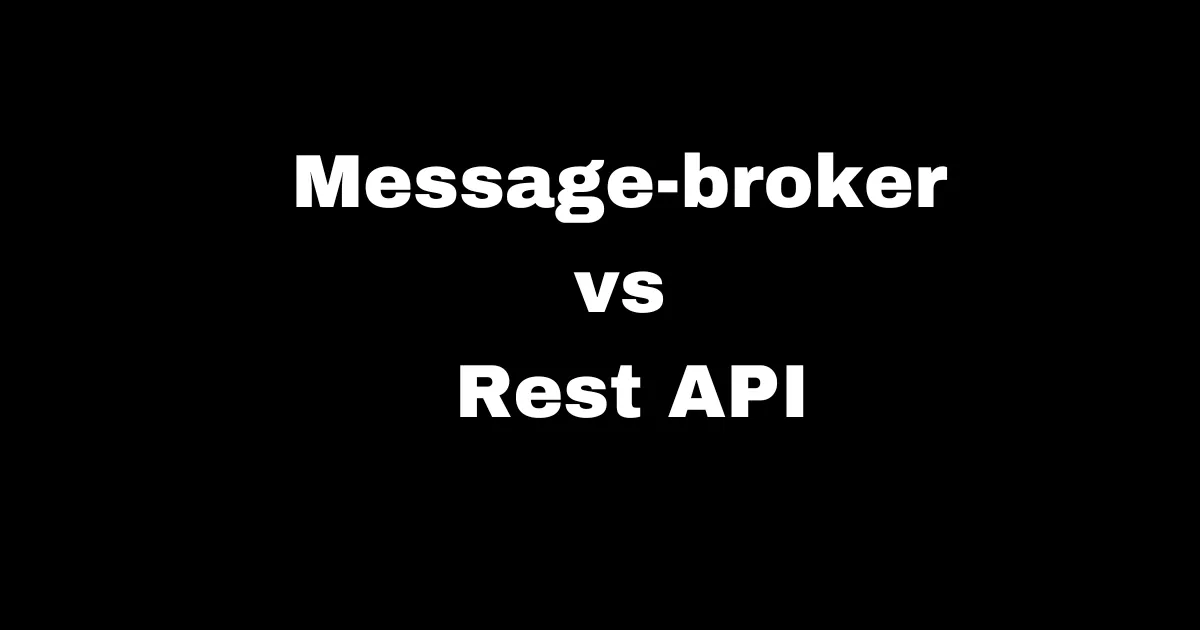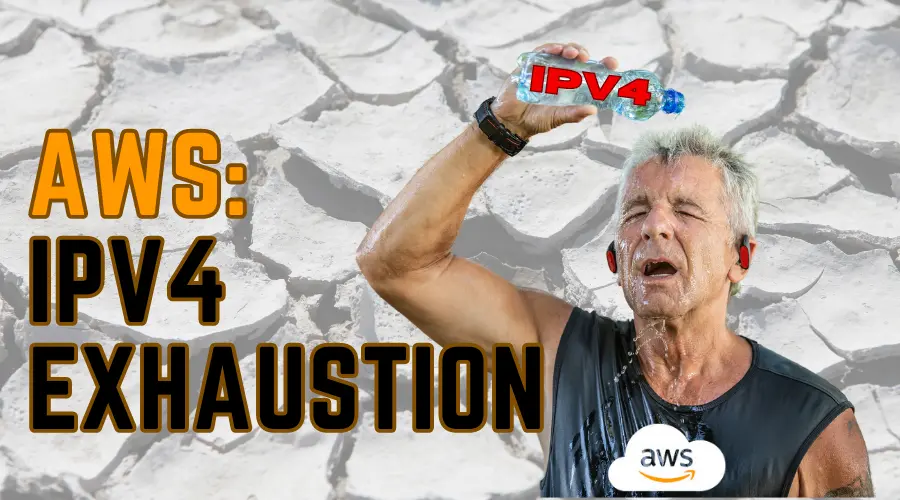
AWS to charge for IPv4 addresses and what is the solution?
Amazon Web Services (AWS), a prominent player in the cloud industry, introducing a new charge for public IPv4 addresses. Effective February 1, 2024 there will be a charge of $0.005 per IP per hour for all public IPv4 addresses, whether attached to a service or not (there is already a charge for public IPv4 addresses you allocate in your account but don’t attach to an EC2 instance).
Why
As you may know, IPv4 addresses are an increasingly scarce resource and the cost to acquire a single public IPv4 address has risen more than 300% over the past 5 years. This change reflects our own costs and is also intended to encourage you to be a bit more frugal with your use of public IPv4 addresses and to think about accelerating your adoption of IPv6 as a modernization and conservation measure.
According to AWS's cloud division, the difficulty in acquiring public IPv4 addresses has resulted in a staggering 300% rise in the cost of obtaining a single address over the past five years. As a response to this financial burden, AWS has chosen to pass on these costs to its customers.
The new pricing model, set to take effect on February 1, 2024, entails a charge of $0.005 (half a cent) per IP address per hour for all public IPv4 addresses. This fee applies regardless of whether the address is connected to a service or not. Although seemingly nominal, these charges can accumulate over time, particularly for users employing numerous IPv4 addresses.

Solutions
-
Adoption of IPv6
-
Use Elastic Load Balancers and NAT Gateways for ingress and egress traffic
-
Use private IPv4 addresses for administrative purposes (generally using SSH or RDP)
-
Bring Your Own IP
Adoption of IPv6
At the time of this writing, global IPv6 adoption is primarily driven by the major internet providers, network device manufacturers, and organizations that need to grow their number of internet-reachable devices. Beyond these, rate of adoption is significantly slower. Reasons for this include the prevalence of NAT, and proxies used in combination with reusable private IPv4 address space (defined in RFC1918) which greatly reduces the number of unique internet-routable IP addresses. Also, the native lack of backwards compatibility between the two versions of IP protocol present barriers to adoption.
Although your drivers will likely be similar to the needs of other organizations, each organization also has some unique requirements. Accordingly, best practices and design guidance in this paper are intended to offer guidance rather than a one-size-fits-all solution to IPv6 adoption. The design of your IPv6 network on AWS may differ from the examples provided in this document. However, this paper can help you make informed decisions as you embark to adopt IPv6. For more info, please read the official aws documentation
Use Elastic Load Balancers and NAT Gateways for ingress and egress traffic
Change your cloud architecture. Minimize the usage of public IPv4 by using ELB and NAT Gateways. This blog post shows you how to use Elastic Load Balancers and NAT Gateways for ingress and egress traffic, while avoiding the use of a public IPv4 address for each instance that you launch.
Use private IPv4 addresses for administrative purposes (generally using SSH or RDP)
Earlier this year, AWS enhanced EC2 Instance Connect and gave it the ability to connect to your instances using private IPv4 addresses. As a result, you no longer need to use public IPv4 addresses for administrative purposes (generally using SSH or RDP).
Bring Your Own IP
You can bring part or all of your publicly routable IPv4 or IPv6 address range from your on-premises network to your AWS account. You continue to control the address range and you can advertise the address range on the internet through AWS. After you bring the address range to AWS, it appears in your AWS account as an address pool. For more info, please read the official aws documentation
Conclusion
AWS's decision to charge for public IPv4 addresses underscores the urgency of adopting IPv6 in light of the diminishing availability of IPv4 addresses. Embracing IPv6 is a crucial step towards building a more sustainable and future-proof internet infrastructure.



